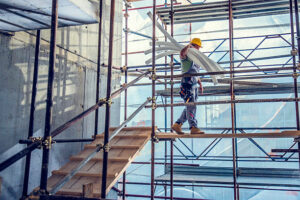Temporary Works
Courses
Industry Training Services provides the highest level of Works (TW) Training that is available in the industry today. There are different levels of involvement, from awareness, to supervisor, to coordinator, etc.
A temporary work is an integral part of a construction project that is required for the permanent works to be constructed as part of that project. It is typical for the temporary works to be dismantled after being used (scaffolds, props, shoring, excavation support, falsework, etc.).
There is no doubt that TW are becoming increasingly important aspects of every construction project. Our CITB Site Safety Plus accredited courses are listed below for your convenience.
FAQs
TW are the elements of a project that are required to facilitate the building of permanent works during construction, including groundworks, bridging, structural solutions and more. TW ensure stability and strength as well as manage possible fatigue. The installation of TW is a crucial stage of engineering and construction as it provides a safe working environment for all involved.
Permanent works are the parts of a construction project that will be used and remain in position for a long time – eg 60 years. This includes buildings and structures such as bridges, roads, retaining walls, etc. The construction of most types of permanent works will require the use of some form of TW.
It is very important that the same degree of care and attention is given to the design and construction of TW as to the design and construction of the permanent works. As TW may be in place for only a short while there is a tendency to assume they are less important. This is incorrect. Lack of care with design, selection, assembly, etc leaves TW liable to fail or collapse. This places people at risk of injury and can cause the project to be delayed.
For Northern Ireland and the U.K the code of practise for TW is BS 5975
For Ireland the HSA guidelines are included in the Guidelines on the Procurement, Design and Management Requirements of the Safety Health and Welfare at Work (Construction) Regulations 2013
The TWC is responsible for ensuring that the contractor’s procedures for the control of TW are implemented on site. The TWC is not normally the designer, but is responsible for ensuring that a suitable temporary works design is prepared, checked and implemented on site in accordance with the relevant drawings and specification.
On some projects, particularly smaller jobs involving lower risk TW, it may be appropriate for the TWC and designer roles to be carried out by the same person, provided that he/she is competent to carry out each of the roles.
The TWC for a project should be formally appointed and have adequate authority to carry out his/her tasks, including stopping the work if it is not satisfactory. It is essential that those selected to act as TWC are competent with relevant up-to-date training, and experience and qualifications appropriate to the complexity of the project.
On larger sites, or where a number of subcontractors are involved, it may be appropriate for one or more TW Supervisors (TWS) to be appointed. A TWS should be responsible to the TWC and assist the TWC in the supervision of TW.
It should contain a list of all identified TW items associated with the project. These can be set out as a table using appropriate headings, which could include:
- Design brief number (for each item) and date issued
- Short description of TW
- Date required
- Category of temporary works
- Designer
- Design Checker
- Date design complete
- Date design checked/approved
- Erection complete and checked or “Permit to Load” “Permit to Dismantle”
Upcoming Courses


